Sugar beet chaser beats sticky ground for Suffolk contractor
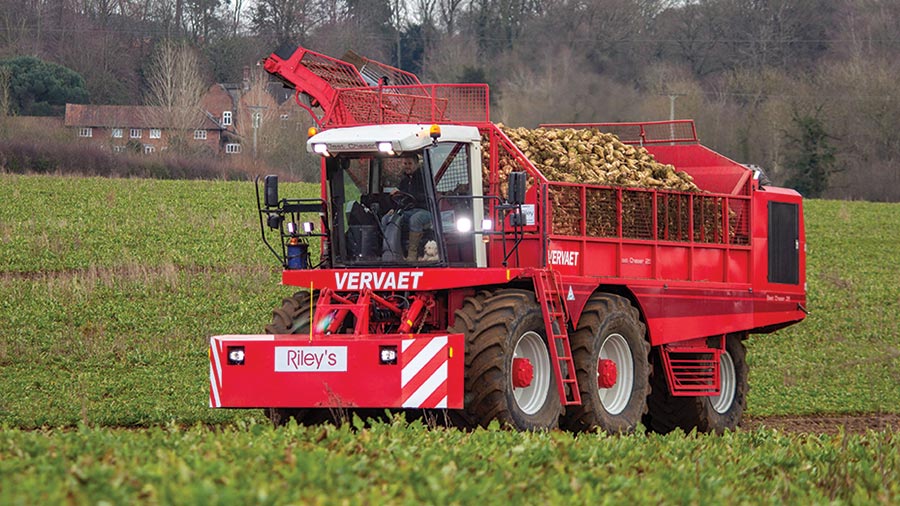 © MAG/Oliver Mark
© MAG/Oliver Mark Wretched winter weather hasn’t got in the way of sugar beet lifting for Suffolk-based arable, pig and contracting outfit PH Hammond, thanks to a canny investment in a converted harvester.
For the past four years, father-and-son team David and James Hammond have had a self-propelled Beet Eater chaser to call on when ground conditions are too testing for tractors and trailers.
See also: How beet growers can slash fertiliser costs with cover crops
“The logistics of getting the crop off the field are as important as the harvester itself,” says James.
“That’s particularly the case on our heavy land, and even more so in years like this when conditions are challenging and yields are in excess of 100t/ha.”
Although the chaser might spend more forgiving seasons hibernating in the shed at Yaxley, south of Diss, it has come into its own in the past four months, and its ability to travel where tractors can’t is helping the Hammonds accumulate more lifting work.
It has already added 500 hours to its 10,000-hour tally, working largely non-stop alongside a four-wheel Vervaet Q616 harvester to shift 400ha of beet since the start of October.
“This year, we would be 250ha behind if it wasn’t for the chaser,” says David. “And there’s still plenty more work to do – we should get all 970ha out of the ground just before the factory at Bury St Edmunds closes in the first week of March.”

David and James Hammond © MAG/Oliver Mark
Emergency investment
The Hammonds bought their first chaser midway through the 2019 lifting season, having been pushed well off schedule by dire ground conditions.
However, with Vervaet importer J Riley only part-way through converting the 2007 Beet Eater 65, they had to complete a sizeable chunk of the work themselves.
“It was a complete gamble,” says David. “But we knew the 625 harvester well and Rileys gave us a steer on what needed doing.
“We took an angle grinder and gas torch to the ring trace and tank side, lifted the whole lot off in one go, and had it working in the field within a week.”
Shedding the unneeded metalwork knocked about 14t off its gross weight, leaving a relatively simple tractor unit to carry the 20t hopper and discharge elevator.
This made it lighter than an equivalent tractor and trailer combination, albeit with a 4t weight on the front to ensure the wheels find enough traction.
“It made an immediate difference in that first year,” says David. “And, although it only played a bit-part role during the following couple of harvests, it was good to know that we had a get-out-of-jail card in the shed.”
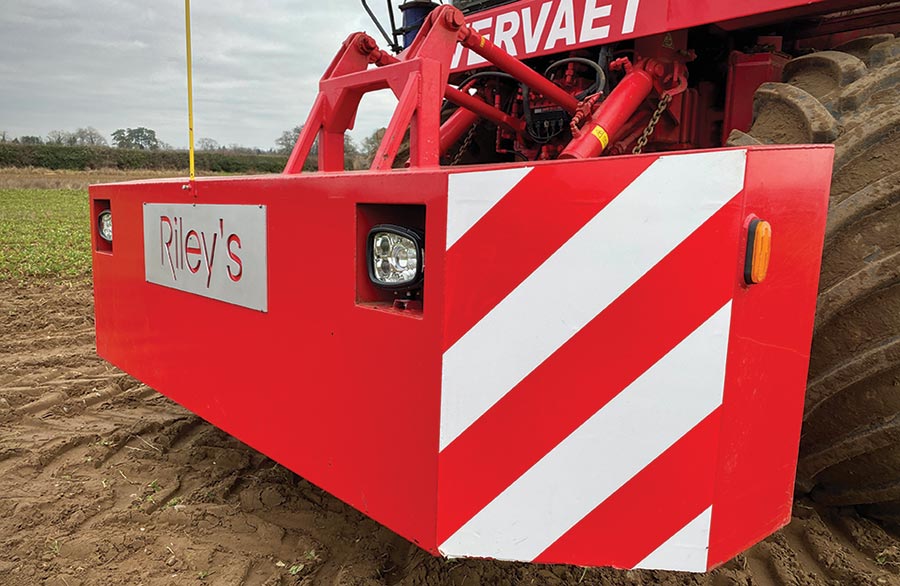
© MAG/Oliver Mark
Due to its market success, and buoyant demand in the UK and western Europe, the original 2007-built chaser had appreciated in value during its three-year stint in Yaxley.
This allowed the Hammonds to upgrade to a slightly newer, 10,000-hour 2009 model that had undergone a complete Rileys renovation, initially for a contractor in Lincolnshire.
“The old model was still in good shape but this one had been completely overhauled, had a respray, and is a slightly tidier conversion job,” says David.
It’s near identical underneath, with the same sought-after 600hp Deutz V8 engine and hydrostatic transmission.
On later harvesters, this was superseded by a slightly less desirable 510hp DAF power unit, before the 643hp Mercedes MTU was introduced.
The newcomer has one notable improvement over its predecessor, in that the unloading arm has been extended by 1m.
This allows James to unload over some hedges, keeping tractors and trailers on the road, and mud off it.
The mod also comes in handy when forming Maus heaps, with the added reach allowing beet to be dropped gently on top, rather than being thrown from the discharge elevator to the centre of the pile.
“Plus, the chaser doesn’t put any ruts in the heap, which you’d get with a trailer, and nor does it leave a mess in the field,” says James.
“The six wheels spread the weight so effectively that the ground is left flat and in a half-decent state, which always pleases customers.”
“We’ve left the tyre pressures at about 30psi – there’s a limit to how much you can let them down with 20t in the back without damaging the sidewalls.”
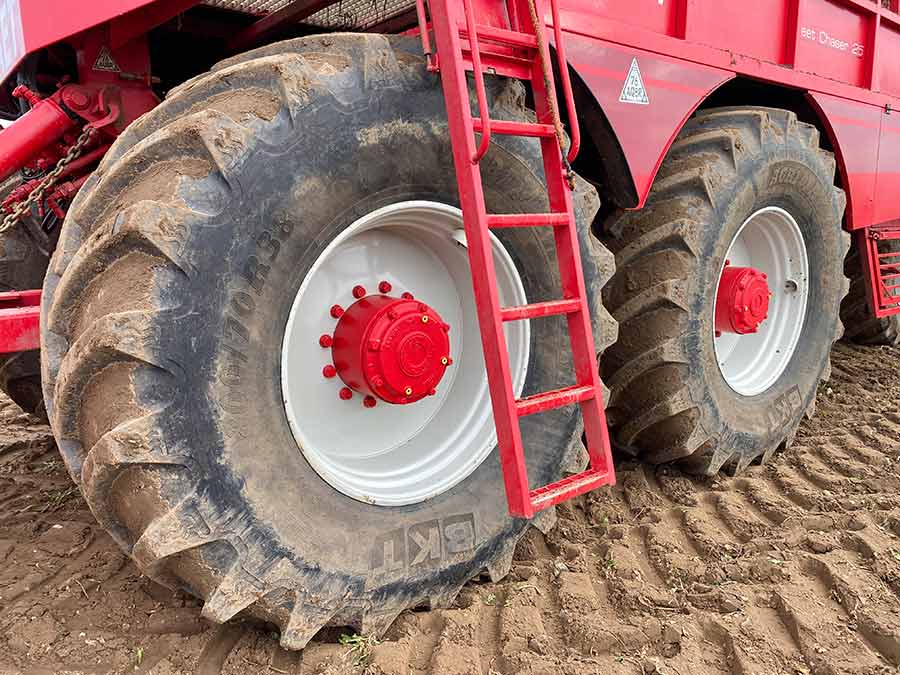
© MAG/Oliver Mark
Thirsty work
A big engine, a full tank and soft ground conditions do have an impact on fuel consumption though, with the Beet Eater significantly thirstier than a tractor and trailer.
“It drinks about 30 litres/ha on average, and 35 litres/ha in the worst scenario, so we have to include a surcharge when we use it,” says David.
“But this is purely to cover the cost of keeping the harvester moving – it’s not a profit-making enterprise – so customers are happy to pay it.”
Fortunately, all of the Hammonds’ beet is lifted within a 15-mile radius of their Suffolk base, which means there aren’t too many potentially expensive commutes.
The two-range hydrostatic transmission has a top speed on the road of 30kph, but is limited to just 15kph in “field” mode, something James would like to see increased.
“It would be nice to travel a bit faster in the field, but it’s a relatively minor downside that is far outweighed by all the advantages,” he says.
“It’s a great way of repurposing a machine that has seen better days and, if we wanted to get more work out of it, there’s always the option of adapting it for maize by fitting belts on the unloading web.
“It might not be perfect but, like for sugar beet lifting, it could certainly come in handy when the weather doesn’t play ball.”
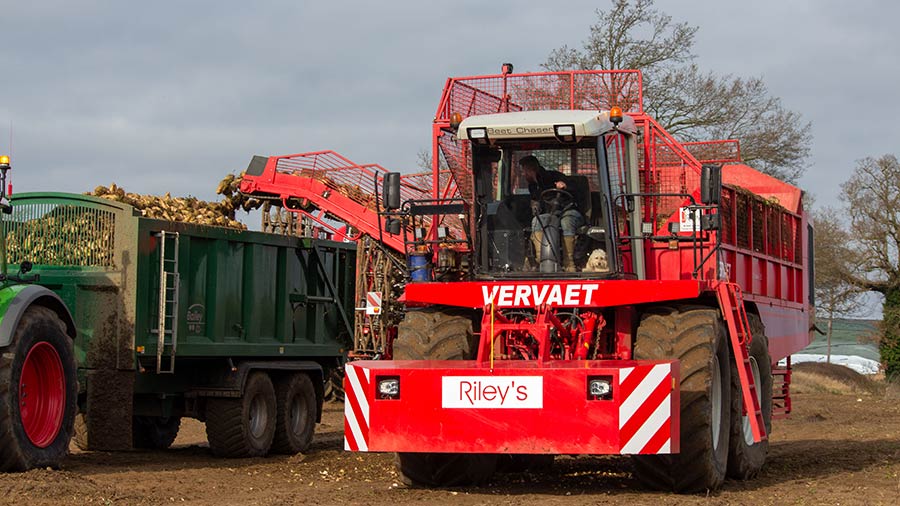
© MAG/Oliver Mark
PH Hammond’s self-propelled chaser
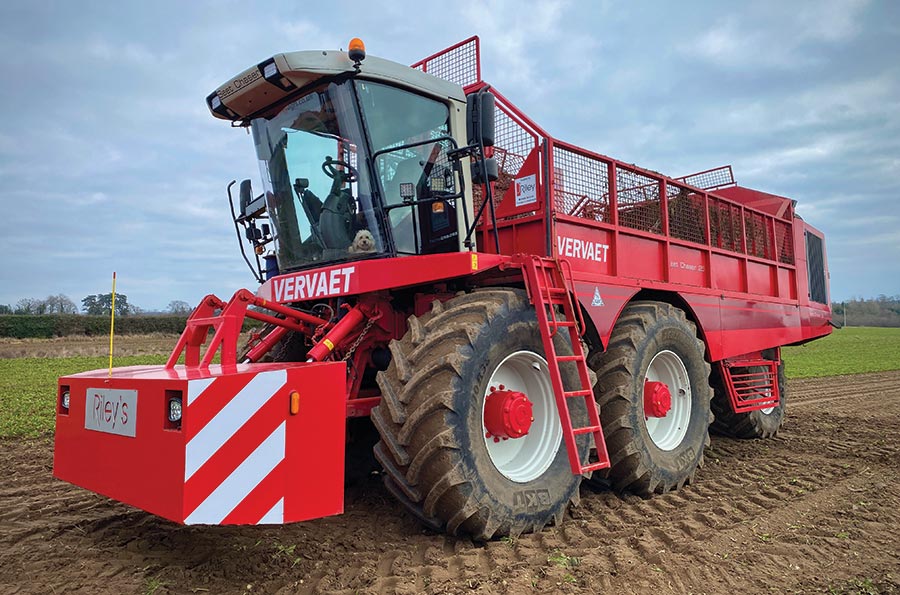
© MAG/Oliver Mark
Base machine: 2009 Vervaet Beet Eater 625
Engine: 16-litre V8 Deutz
Power: 600hp
Fuel tank: 1,100 litres
Transmission: Sauer Danfoss two-range hydrostatic with diff-locks
Running gear: Triple axle with 800/70 R38 x4 and 800/65 R32 x2
Turning circle: 7.8m
Tank capacity: Approx 20t

